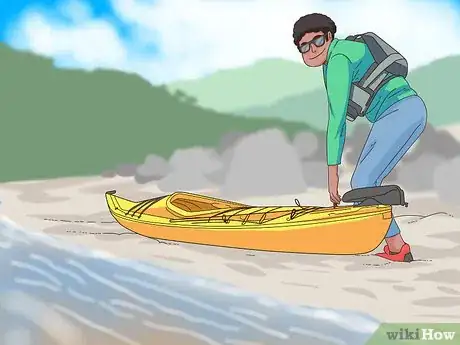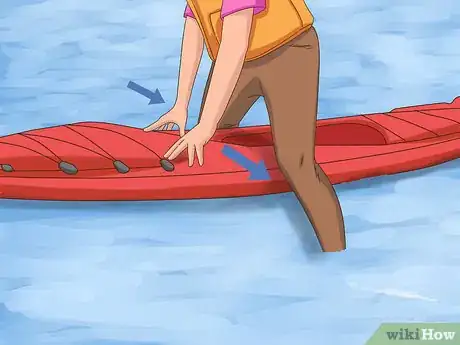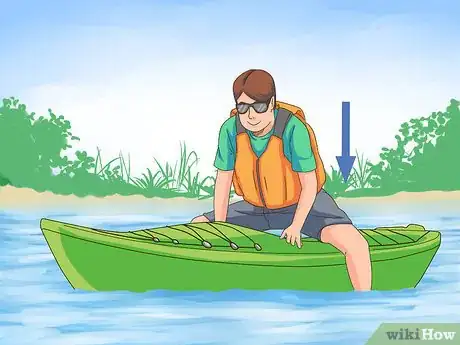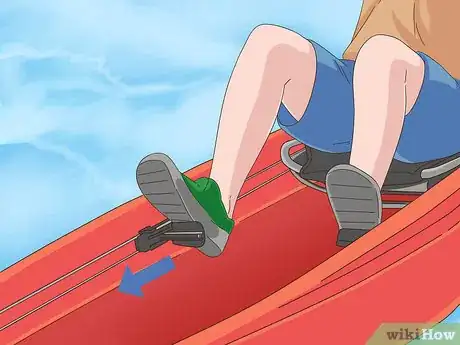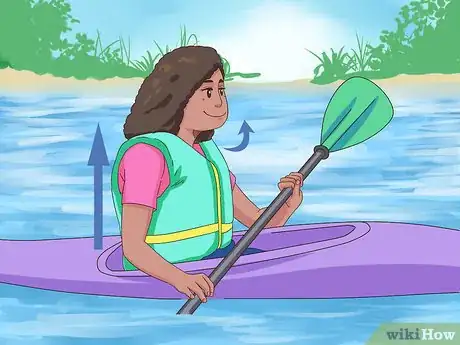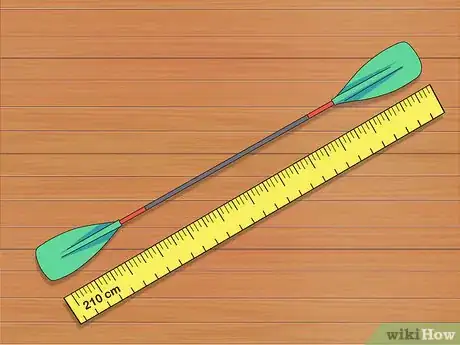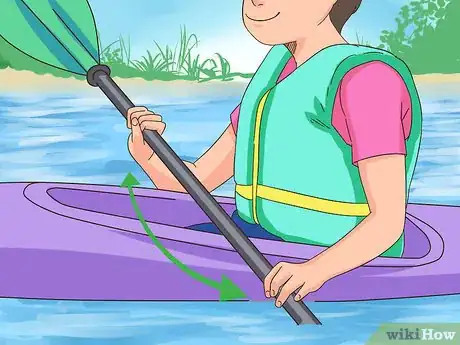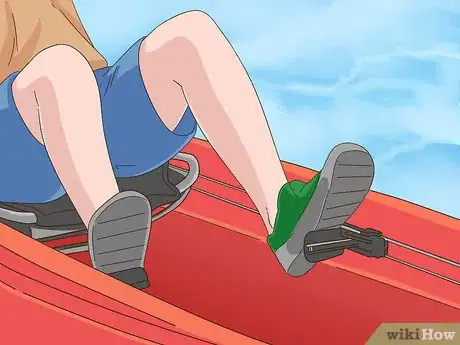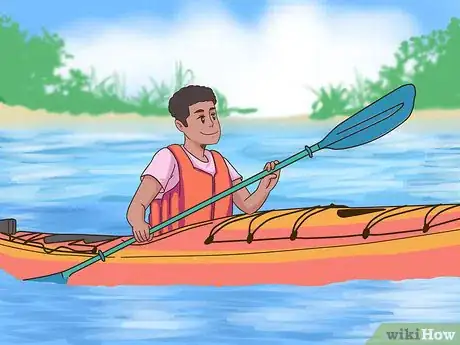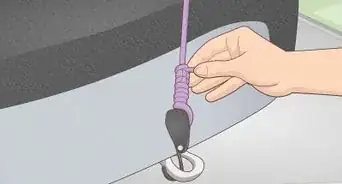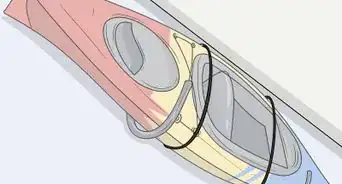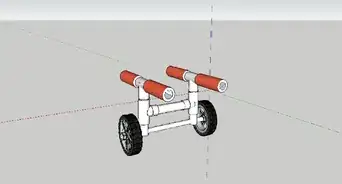X
This article was co-authored by wikiHow Staff. Our trained team of editors and researchers validate articles for accuracy and comprehensiveness. wikiHow's Content Management Team carefully monitors the work from our editorial staff to ensure that each article is backed by trusted research and meets our high quality standards.
This article has been viewed 20,796 times.
Learn more...
Although it may sound easy, getting into a kayak isn't as simple as lowering yourself into the seat. To sit comfortably and stay balanced, you'll need to sit inside properly. Make use of the specialized equipment inside the kayak to ensure that you'll be safe and secure in your seat.
Steps
Part 1
Part 1 of 2:
Getting into the Kayak
-
1Wear a life vest, sunglasses, and waterproofs. When you're kayaking for the first time, it's best to gear up in the appropriate clothing before going out. Wear a life vest in case you fall out of the kayak. Bring sunglasses, especially if it's sunny. The reflection of the sun on the water will be very bright without sunglasses. If you don't want any of your clothes to get wet, you should consider wearing waterproof clothing.[1]
- Alternatively, wear old clothing that you don't mind getting wet and shoes that have a good grip on them.
-
2Bring your kayak to a flat surface near the water if you're by the coast. The starting position of your kayak can affect the difficulty of getting in. Find a piece of shallow land that smoothly leads into the water. Bring your kayak close to the water. The front half of your kayak should be in the water. If it starts to float away, bring it back a little until it stays still.[2]Advertisement
-
3Straddle the kayak with a leg on each side. Stand over the seat in a wide stance, keeping a hand on the front of the kayak. This strong and stable position will allow the maximum amount of control when you're lowering yourself into the seat.[3]
-
4Lower yourself into the seat. Crouch downwards until your backside is touching the seat. Keep holding the front of the kayak to keep your balance. If you're not particularly flexible, you may need someone's help to lower yourself down.
- If you're not sure whether you can crouch down far enough, try lowering yourself into the kayak on dry land first.[4]
-
5Bring your legs inside the kayak. Once you're sitting in the seat, bring your legs inside the kayak. There will be two large padded sections by your legs. Press your thighs against these.[5]
-
6Adjust the feet braces. Further down in the hull of the kayak there are two feet braces. Push your feet into the feet braces until your legs are straight. You will hear the feet braces click into place. Try different positions if you're not comfortable.[6]
- You should have about 1 centimetre (0.39 in) of space between your thigh and the thigh padding when the feet braces are properly adjusted.
-
7Push yourself into the water when you're ready. Once you have your paddle and you're comfortable in the seat, use your hands and body weight to shimmy the kayak towards the water. It will take several pushes until the water takes the weight of the kayak.
- Ask your friends or family to push you out if you need assistance.
Advertisement
Part 2
Part 2 of 2:
Staying Stable in the Kayak
-
1Keep your back straight and your chin up. Posture is crucial to keeping your balance. If you're slouched over, your weight will be lopsided. Tighten the straps of the back brace to encourage yourself to sit straight. Always look to the horizon as you paddle.
-
2Use a correctly sized paddle of around 210 centimetres (83 in). Professional kayakers will use longer paddles to generate power as they row. However, for most people, this is overkill and can increase the chance of losing your balance. Instead, opt for a shorter paddle.
- Ask an experienced kayaker what paddle they would recommend for beginners. If you are taking beginner lessons, your instructor will be able to tell you which paddle is best for your needs.
-
3Grip the paddle in a wide position. Many beginners will grip the paddle close to their chests. Instead, slide your hands until they are around 8 centimetres (3.1 in) from the part of the blade that curves outwards. This will give you maximum control when you're paddling. More control means you'll be able to adjust your direction on short notice.
-
4Drive your feet into the feet braces. The connection between your butt, your knees, and your feet make up a tripod. All of these parts should be engaged when you are kayaking. Keeping your feet relaxed is a common mistake. Keep your feet tense. With all three connection points tensed, you'll be able to shift the weight of the kayak with ease.
-
5Row with a calm and precise stroke. If your paddle is splashing as it enters and exits the water, your stroke may be too intense. Try going a little slower, sliding your paddle blade into the water at an angle, pulling, then sliding it back out again at an angle. Practice this motion slowly for both sides of the paddle. A calm but strong stroke will keep you balanced as you paddle.
Advertisement
References
About This Article
Advertisement

